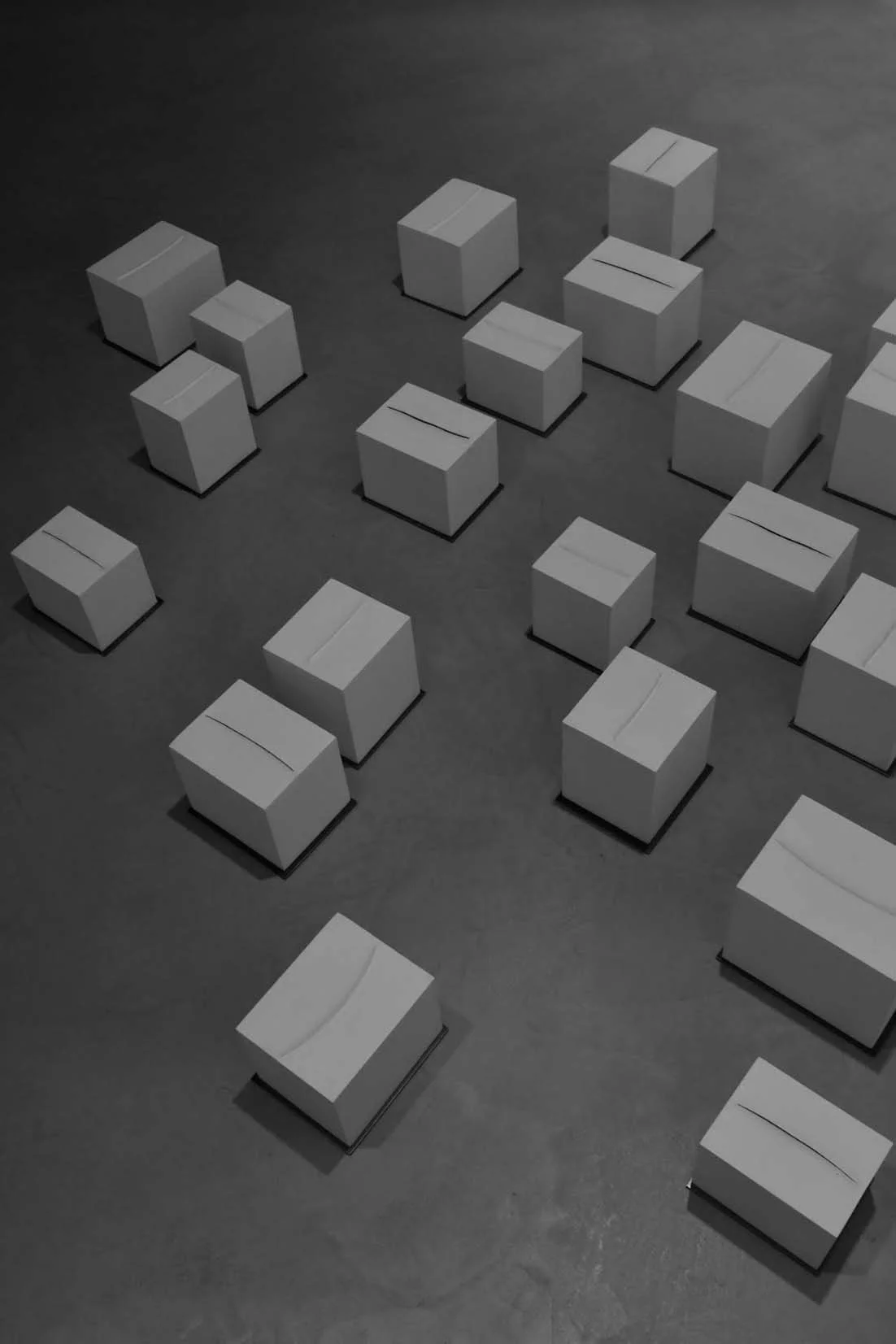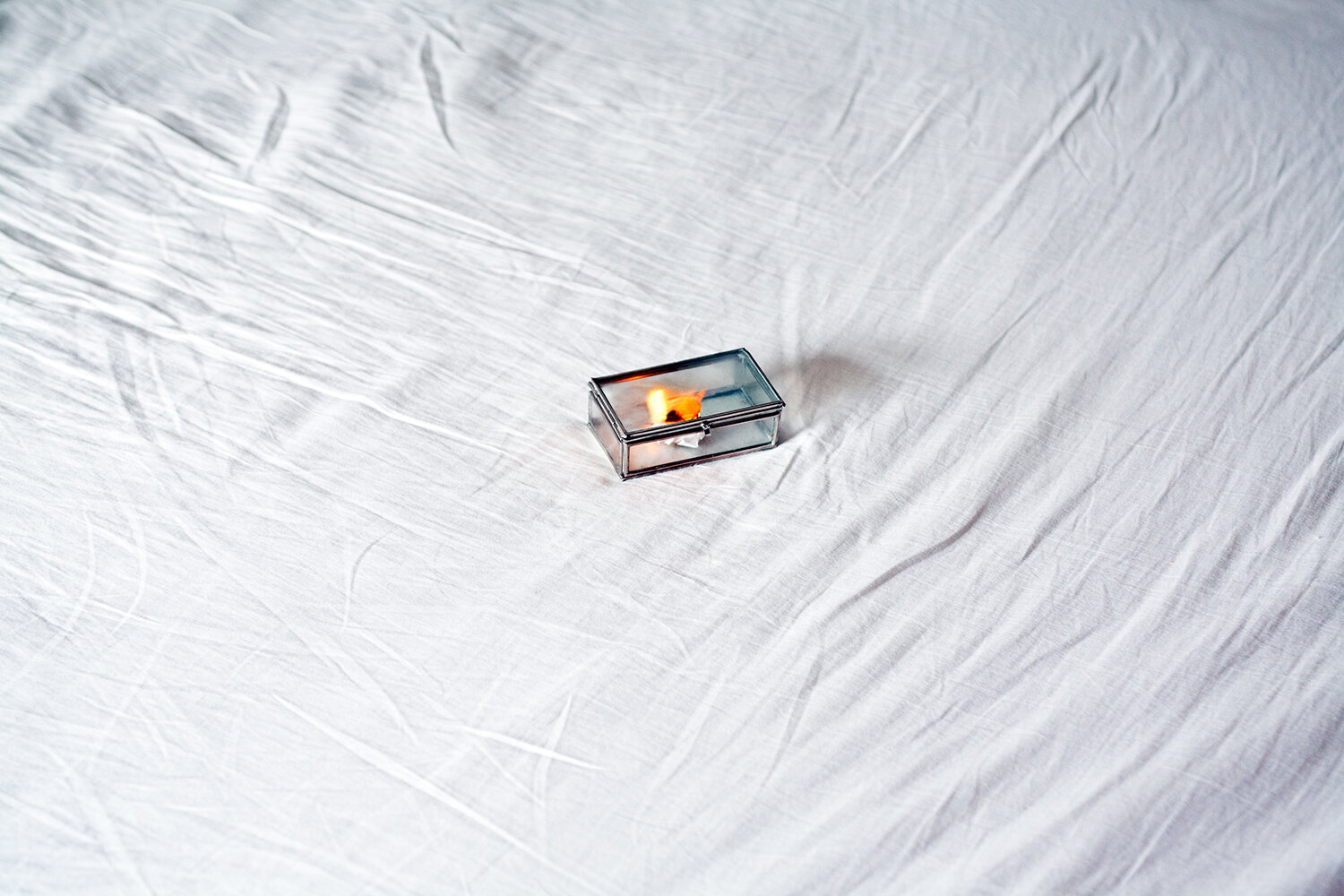Parallel Lines: Thierry Bigaignon
Harmony of Chaos », Renato D’Agostin (courtesy Bigaignon)
Federica Belli The language of photography is still among the most contemporary ones, despite the growing diffusion of other digital arts. Which forms of photography do you find particularly exciting in our time?
Thierry Bigaignon Right now we are living in very interesting times, which find no equivalent in the past two hundred years of history of photography. Photography as a class has evolved and matured, reaching an adult stage. By looking at the market and artists around the world, there is a very strong and apparent direction: pushing the medium much further than what people have done in the past. Such new school of photography enables young artists to create with no conditioning or burden from the past to restrict their creativity. Concretely, this entails that a lot of artists are playing with the medium, with the camera and the chemicals, engaging themselves in a creative process which goes much beyond what is described as conventional photography. The Bigaignon Gallery is very attentive to that, which is much more than a trend – rather, it is a direction photography is embracing.
F.B. In a sense photography becomes much more than a means to explore reality, assuming the role of subject itself. Though the Bigaignon gallery represents a selection of photographers at different stages of their career, they are all brought together by an experimental approach which pushes the boundaries of photography. What makes visual experimentation so important in photography?
T.B. I’m not sure the prism of experimentation is the only one through which my artists are looking at the world. Most of them do experiment, but I am not sure this is the entry door of their point of view. Rather, it is just a mean to bring something new to the table – and it becomes a key component of that, but never the culprit. Experimentation is a consequence rather than a cause. What matters most is seeing themselves and their creation as contemporary, meaning that they have concerns regarding today – be it ecology, democracy, society, politics – rather than focusing on the past or the future. For such reason, I define them as contemporary artists rather than photographers.
Secondly, the artists I work with see themselves as complete artists. In the past, artists have been defined as separate from the photographers – that sounds completely weird to me. Only if one sees themselves as an artist and live as an artist, one comes to think and create as one. Thirdly, despite all I have said until now, all these artists share a common feature: photographic culture. While. Being artists of today, through their education or practice they relate to the specific realm of photographic culture which is profoundly different from painters’ culture or sculptors’ culture in terms of mindset and references. Precisely for these reasons, I define my gallery as a photosensitive contemporary art gallery. Those three components are extremely relevant to us and the artists we choose to represent.
Pompeii, Vittoria Gerardi (courtesy Bigaignon)
F.B. Listening to your point of view makes it clear how important it is to actually live as an artist in order to be one and see the world through a prism which is specific to a photographic culture. And it also makes it clear how fundamental it is for a gallerist to be able to see through an artist and evaluate her principles. With more and more art platforms emerging in the online scene, how has the role of the gallerist evolved in terms of protecting and presenting artists?
T.B. That is a good question. In my DNA as Director of a Gallery, I totally support new platforms and innovation. By visiting the Gallery, which I know you have done, one gets to witness how integrated
innovation is in every touch, from the particular smell in the space to the curated bookshop, from the presentation of works to the open reserve. We try to think forward and embrace innovation by renewing the practice of a Gallery. What the internet has to bring, both in terms of platforms and viewing rooms, is an opportunity to promote artists to a larger audience or just to be more precise in the explanation of their works. A physical visit to the Gallery is enough to notice how we enjoy getting involved with the public and explain what we are doing, yet such experience generally lasts only two or three minutes; somehow, those internet based initiatives might dilate the exposure to the works. However, we strongly believe that the new media should never replace physical spaces, but rather complete them and expand their potential. Rather than replacing, we aim at enriching and adding layers to the collectors’ experience. For instance, when COVID arrived and many galleries started implementing viewing rooms, we had been doing that already – that showed me we were on the right path. In addition to that, many galleries started proposing virtual tours with the mouse, which were not a good experience for the users. That is when we resolved to think outside the box and invite a film crew to the gallery: we recorded a virtual video tour, personally welcoming visitors and explaining the show. Then the viewer could pause the video, click on an artwork and trigger more videos on the making of a specific artwork. All these internet based initiatives are always good opportunities, as long as one is able to tailor them to one’s own DNA.
F.B. At a point, these realities have to be accepted as part of our world. However, there are people who will always prefer a physical visit to a virtual tour. There are collectors who will always go for an in person dialogue rather than a virtual auction. And everyone has the right to choose how to approach art.
T.B. And if you look at any art form along history – take acting shows: popular theatre was the first one, then opera and stage theatre arrived, but they did not cancel each other; then cinema came, yet opera and theatre continued to flourish; now we have TV and Netflix, both living side by side their predecessors – it has continuously evolved to enrich the experience and satisfy different audiences, rather than just shifting forms.
Moods in a Room , Catherine Balet (courtesy Bigaignon)
F.B. There will always be someone shouting how cinema is dead, how TV is gone or photography is over. Yet they never really are. Participating in multiple art fairs, you have had the possibility to observe the place photography holds in the contemporary art scene. How is it perceived by collectors with respect to other art forms?
T.B. We are at a turning point right now. The important private collectors – institutions have been involved with photography for a long time now, so I am referring to private collectors specifically – still face the problematic reality of editions. Put simply, photography can be reproduced and it is only natural that photographers employ its nature and reproduce it. Many collectors have avoided photography because they did not desire something which existed in multiples. Thus, photographers and galleries have reduced the edition to the strict minimum of three, five, or maybe seven. But not more. We will reproduce photography, it is natural and we should not be shy about that. But the edition will be minimal. And such trend has welcomed many new collectors who have been enticed by the acceptable compromise of owning one copy out of three, for instance, rather than out of fifty. Another trend that interests me is that contemporary artists we represent are in the process of experimenting with the matter of photography, with chemicals and papers which make each artwork unique by nature. Such trend is here to stay, as it is shifting the market towards its maturity. This is what I refer to by saying that the market is maturing. We now have unique pieces of contemporary art which interest collectors, which is the future of photography.
De Labore Solis », Yannig Hedel, (courtesy Bigaignon
F.B. And excluding the realm of NFTs, that is basically the only way to make a photograph unique. Sticking to the topic of uniqueness, which particular need do you think can be satisfied by photography only in our society, compared to other visual languages?
T.B. That’s a tough question, I am not sure there is a unique answer. Traditionally, photography has been considered a way to represent a certain kind of reality. We now know photography is actually not representing reality, that would be too simple. It is much deeper than that. However, it has a specificity: the ability to represent something which was in front of the camera, or in front of the paper. And that gives photography a sort of social and political role of mirror. Does that make photography much different with respect to painting or sculpture? I am not sure, maybe. I would not bet on it. It is much more complex than that.
Another way of looking at it is through its technical aspect. Photography is linked to technology, it has been since its invention – which is not the case with painting, for instance. But this answer is limiting as well. So, what place does photography occupy in society right now? I am not sure I can answer in a straightforward way. In the end, whether they are photography based or not, artists embrace the medium and the tools they choose to express themselves as an answer to the world they are living. I am not sure photography is that different with respect to other medium, but it is definitely evolving.











